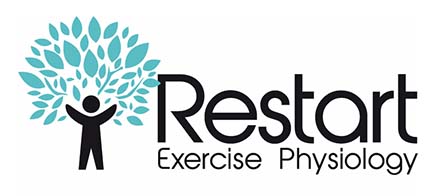Circadian rhythm, often described as the body’s ‘internal clock’, orchestrates a 24-hour cycle synchronised with day and night-time patterns. This intrinsic rhythm governs crucial bodily functions including alertness, cognitive function, sleep quality, hormone balance, immune response, metabolism, and core body temperature regulation.
Internal Functions Upon Awakening
Most individuals naturally wake up as the sun rises, a response deeply connected with our circadian rhythm. Upon waking, our bodies release cortisol, a hormone produced by the adrenal glands, alongside epinephrine which is released in the brain. This cortisol surge early in the day plays a pivotal role in setting our internal clock.
A subsequent benefit of this natural AM cortisol release is that it initiates a 12-14 hour countdown where melatonin is released, a hormone crucial for sleep regulation. This internal rhythm persists automatically and indicates that the timing in which we wake up has an impact on when we begin to feel tired during the evening.
The Impact of Light on Sleep and Circadian Rhythm
Light serves as a direct regulator of our internal clock. When light enters our eyes, it stimulates retinal ganglion cells, which communicate with the suprachiasmatic nuclei in the brain, our central clock. Notably, exposure to natural light, particularly during the early morning hours, is paramount for setting our circadian rhythm optimally.
This is primarily because our cortisol pulse is best stimulated by a low solar angle. Put simply, when the sun is still low in sky our retinas receive light much better. So it is recommended that we walk outside immediately after waking up so that our body can begin it’s cycle of crucial functions. A question often asked, can I also receive light through a window or a car windscreen? The answer is yes, and in some cases this might be one’s only available option. However, it is 50 times less effective to view light through a window, than it is to have direct exposure.
Now, this does not mean that you should be staring directly into the sun. After being asleep for a long or short period of time your eyes will have a low sensitivity and will require exposure to as much photons as they can but this can be achieved by simply being outside. Exposure to extreme bright lights is advised against if you have a retinal degenerative disease for several reasons. If you wear prescription glasses, it is not necessary to take them off – just being outside is more than enough exposure to initial your circadian rhythm.
The Impact of Artificial Lighting
Artificial lighting, while useful, may not replicate the full spectrum of natural light and could potentially disrupt our circadian rhythm if used improperly, especially during evening hours. The longer we are awake the more sensitive our eyes become to light so it is important that we do not expose ourselves to bright or fluorescent lights before trying to go to sleep, as this will have a significant impact on your circadian rhythm and make it harder to fall asleep. If you are someone that likes to read or watch TV before going to bed, read in a dim light or view your screen at a low angle. Looking up at a light source replicates looking up at the sun in the morning, and can inadvertently keep us awake.
The Impact of Temperature on Sleep and Circadian Rhythm
While temperature doesn’t directly affect circadian rhythm, it can influence internal functions to align with our body clock. Core body temperature follows a distinct pattern, reaching its lowest point around 4 am and peaking in the late afternoon. Exercise, particularly cardiovascular activities in the morning, can expedite the waking process by elevating core body temperature. Additionally, temperature manipulation, such as cold showers in the morning, can induce a quicker awakening and even shift our internal clock forward, facilitating earlier wake-up times. Conversely, a warm shower before bedtime can aid in matching our body’s natural melatonin release, promoting better sleep.
Using temperature manipulation can be effective for those that have alternate working conditions such as pilots or night shift workers. Understanding when your temperature minimum and maximum place throughout the day will better allow you to use temperature to shift your circadian rhythm to increase productivity and alertness while working.
REMEMBER! Your temperature is at its lowest 2 hours before you normally wake up and at its highest approximately 12 – 14 later.
Optimising Your Routine
Considering these insights, adjusting our morning and evening routines could enhance overall well-being by improving sleep quality (for more on the vital importance of adequate sleep, click here). Incorporating outdoor activities upon waking to maximize exposure to natural light and engaging in morning exercise may boost alertness and cognitive function throughout the day. Conversely, adopting relaxation techniques and avoiding bright lights before bed can promote better sleep quality and align with our circadian rhythm.
Knowing what you know now, what would change about your morning or evening routine?
Yours in health,
Seth Browne
References
- Okamoto-Mizuno, K., Mizuno, K. Effects of thermal environment on sleep and circadian rhythm. J Physiol Anthropol 31, 14 (2012). https://doi.org/10.1186/1880-6805-31-14
- Blume, C., Garbazza, C., Spitschan, M. Effects of light on human circadian rhythm, sleep and mood. Somnologie (Berlin), 2019; 23(3): 147–156. http://doi:10.1007/s11818-019-00215-x

0 Comments